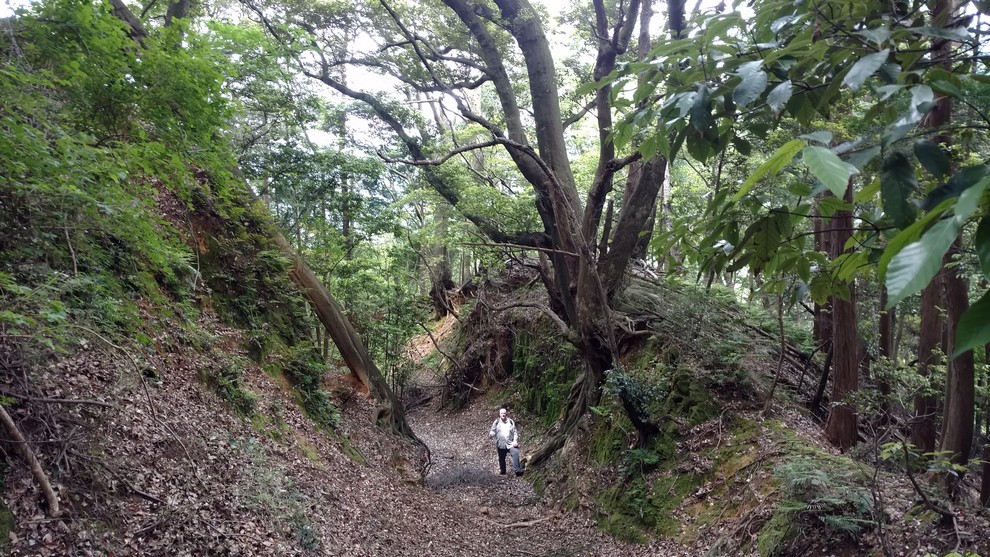Higashiuraji - Old East Izu Road
Category: Japanese History
東浦路 Higashiuraji - East Back Road
The Izu Peninsula is famous as the setting of Izu no Odoriko (The Dancing Girl of Izu), a short story by Nobel laureate Yasunari Kawabata. The story develops as the characters make their way along the Old Shimoda Road which started in Mishima and ended in Shimoda. While this road is the most well known, there were actually three old roads in Izu, all called the “Shimoda Road.”
Many sections of these old roads and the landmarks along them, can still be found and walked along. The Higashiuraji (East Back Road) was the main road between Odawara and Shimoda that wound along the mountains and coasts of eastern Izu. One of the most well preserved sections of the Higashiuraji is located between Usami (part of Ito City), and Ajiro (part of Atami).
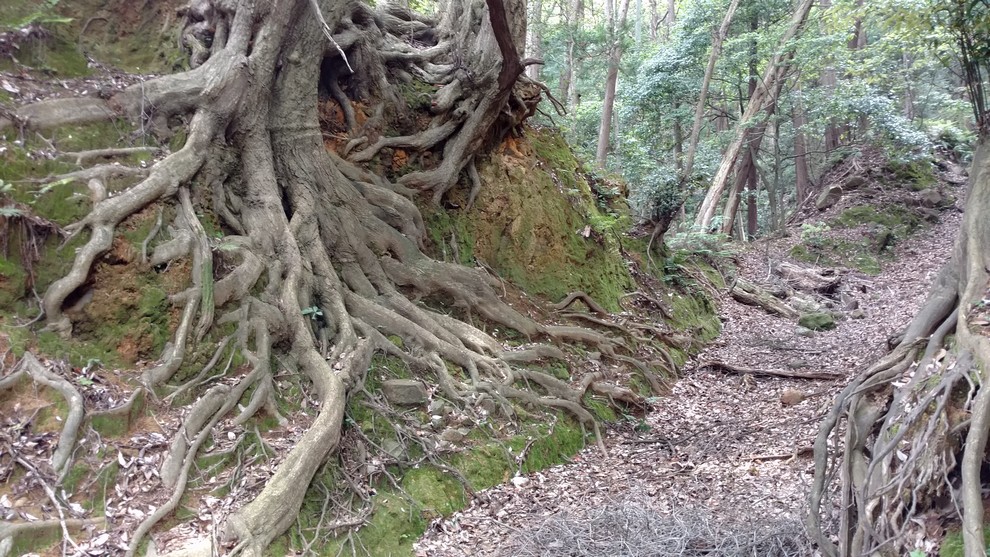
Below are some sign posts along the trail. The accompanying text are English translations of those signs.
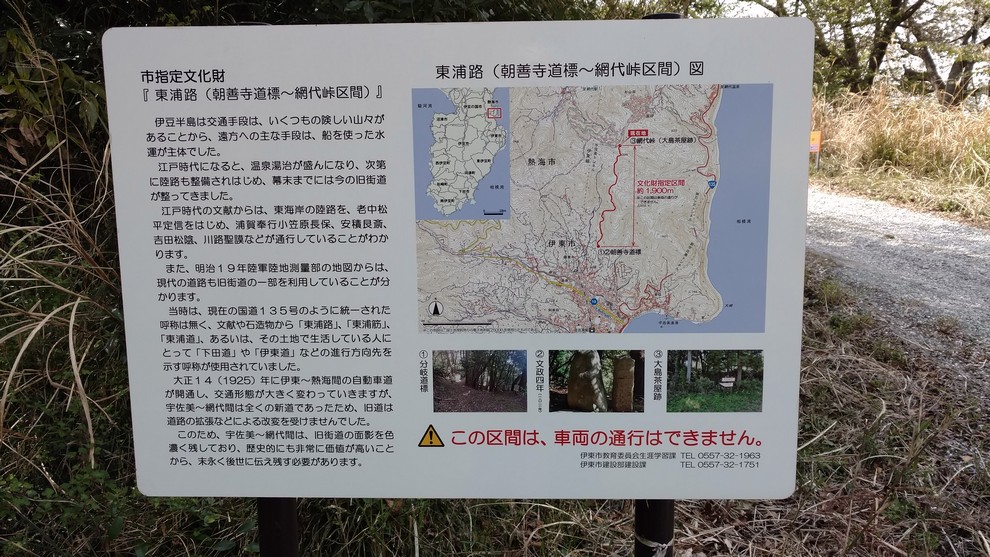
City-designated Cultural Property
Higashiura-ji Road (from Chozenji Road Signpost to Ajiro Pass)
The Izu Peninsula has a number of steep mountains, so the main means of transportation to distant areas was by water using ships.
In the Edo period (1603-1867), hot spring cures became popular and overland routes gradually began to be developed, and by the end of the Edo period (1603-1868), the current old highway was in place.
Documents from the Edo period (1603-1867) show that the overland route on the east coast was traveled by such notable travelers as Sadanobu Matsudaira, an old court official, Nagayasu Ogasawara, Gonzai Azumi, Shoin Yoshida, and Seimo Kawaji, among others.
The map of the Army Land Survey Department in 1881 shows that the present-day road also uses a part of the old highway.
At that time, there was no unified name for the road, such as the current National Route 135, and people used “Higashiura-ji,” “Higashiura-suji,” “Higashiura-michi,” or, for those living in the area, “Shimoda-michi,” “Ito-michi,” or other names to indicate the direction in which they were traveling.
In 1925, the motorway between Ito and Atami was opened to traffic, and the traffic patterns changed dramatically.
For this reason, the old road between Usami and Ajiro retains a strong trace of the old highway and is of great historical value, and must be passed on to future generations for many years to come.
Jimmy’s Izu English offers a guided tour of this section of the Higashiuraji. If you’re looking for a side trip on your next trip to Japan, or if you already live here and want to discover some of Japan’s important but lesser known history, this is a perfect day trip.
Following are some photos and trail signs from the Usami-Ajiro trail:
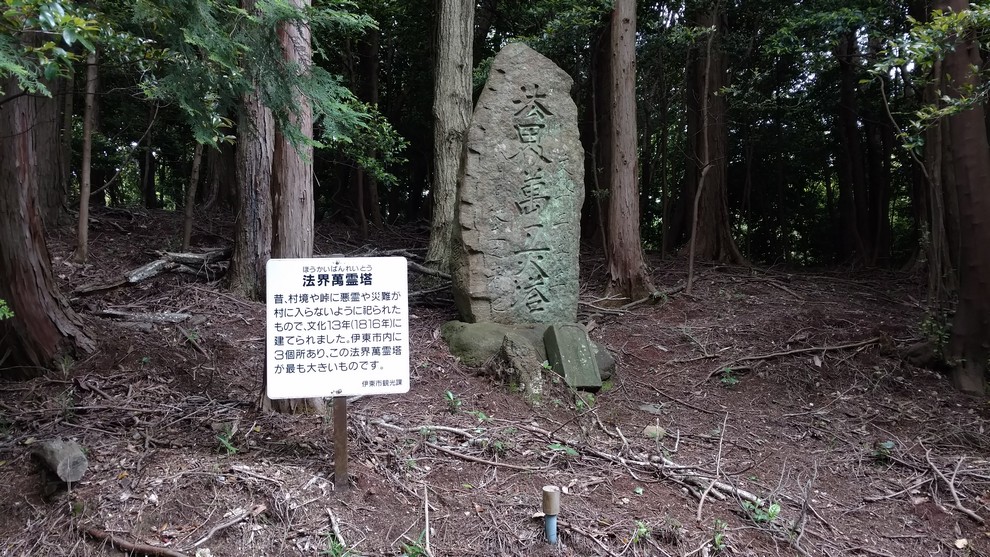
(ほうかいばんれとう)
法界萬霊塔
昔、村境や峠に悪霊や災難が 村に入らないように祀られたもので、文化13年(1816年)に建てられました。伊東市内に3個所あり、この法界萬霊塔が最も大きいものです。
伊東市観光課
Houkai Banreitō (Pagoda of the Universal Dharma)
This pagoda was built in the 13th year of Bunka (1816) and was enshrined at village borders and mountain passes to prevent evil spirits and calamities from entering the village. There are three of these pagodas in Ito City, and this one is the largest.
Ito City Tourism Division
Stone Guidepost Directing Toward Chozen-ji Temple
Chozenji Temple in Yamada was founded by Nichijo Shonin, a famous priest of Nichiren Shoshu. Nicho-cho Shonin became the protective deity for healing eye diseases, and many people came from afar to visit the temple, so a stone guidepost was built here.
Ito City Tourism Division
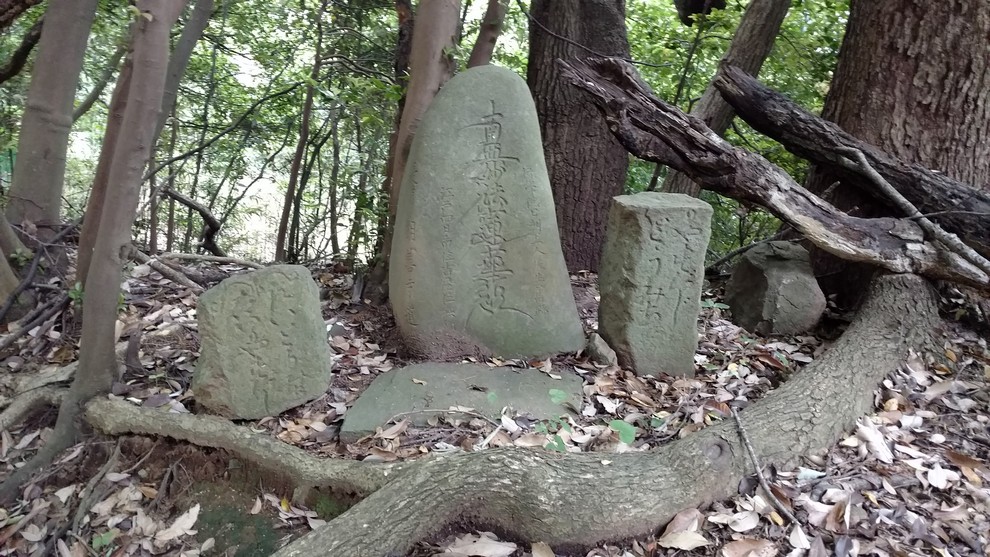
The flat stone on which Shoin Yoshida sat
One hundred and fifty years ago, Shoin Yoshida boarded a black ship anchored in Shimoda and hurried down the “Kyoto-Kairo” road through Usami to Shimoda in order to cross to foreign countries. Shoin-sensei was captured and eventually disappeared into the fog of a penal colony, never to be seen on this highway again.
In the old days, people passing along the road used to sit on flat stones to take a rest. Shoin-sensei might have sat down and wiped off his sweat on his way to Shimoda.
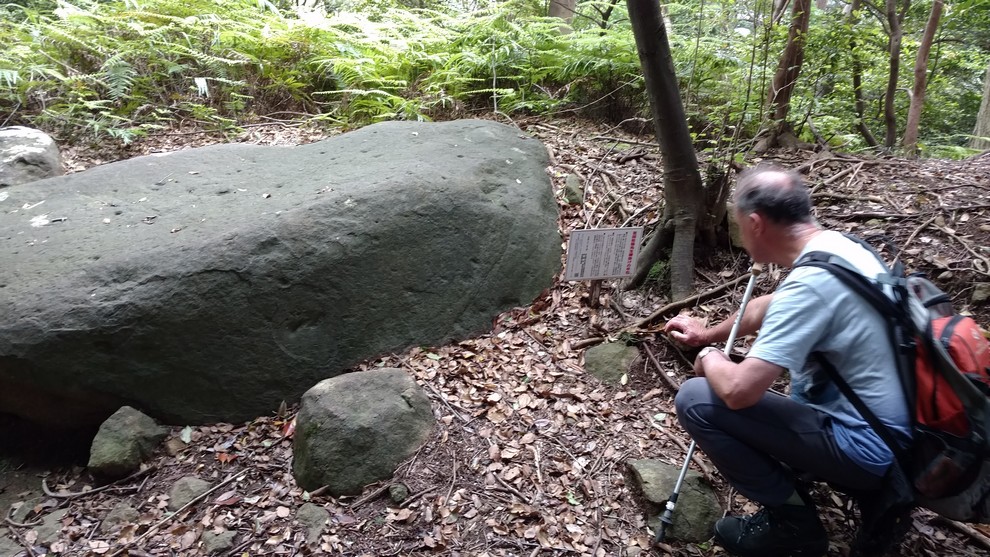
-If you look closely at the surface of this flat stone, you will see that it is inscribed with a number of letters and marks. This area is the site of “Edo Castle Stone Choba,” where a large amount of stones were quarried for the stone walls of Edo Castle 400 years ago. This flat stone may be one of the stones used in the construction of Edo Castle.
February 2009
Usami Edo Castle Stone Choba Ruins Preservation Society
Ito-shi – Ito City Board of Education
Ito Tourist Association
Ito City Tourism Division
This signboard was created and installed by the Usami Edo Castle Stone Choba Ruins Preservation Society with a grant from the Japan Association of Travel Agents’ (JATA) “JATA Environmental Fund.
Click on any photo below to open a gallery

